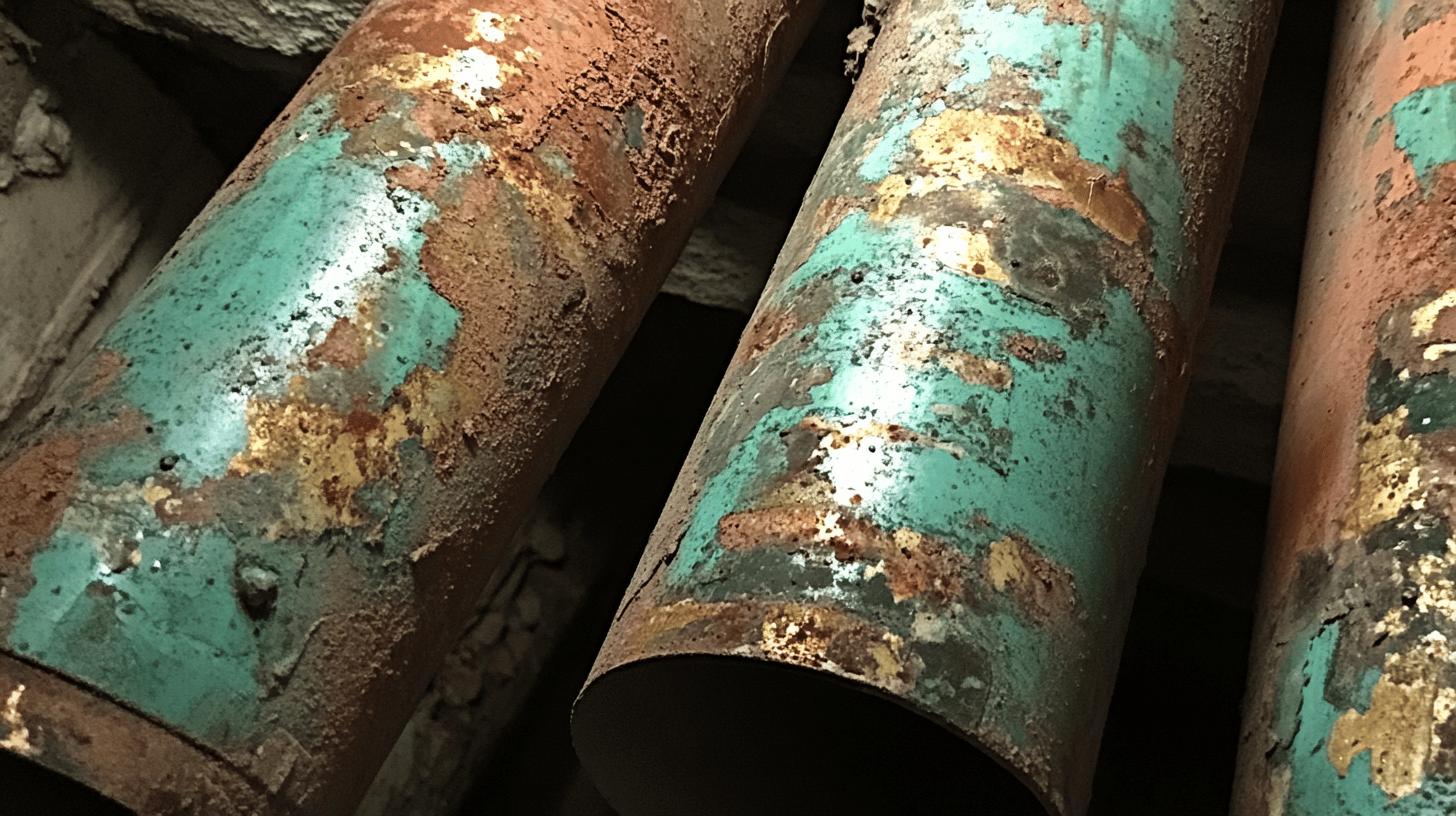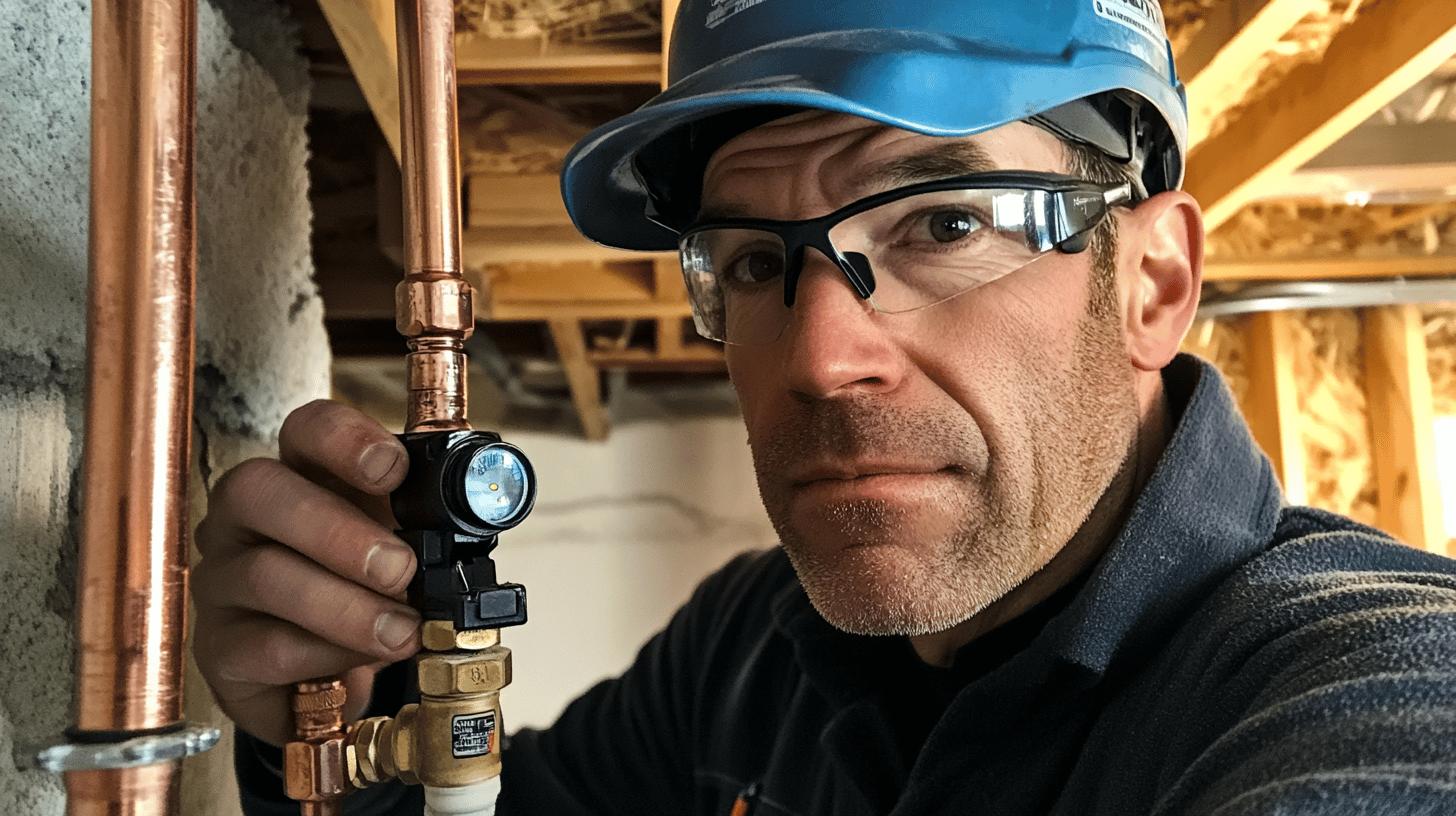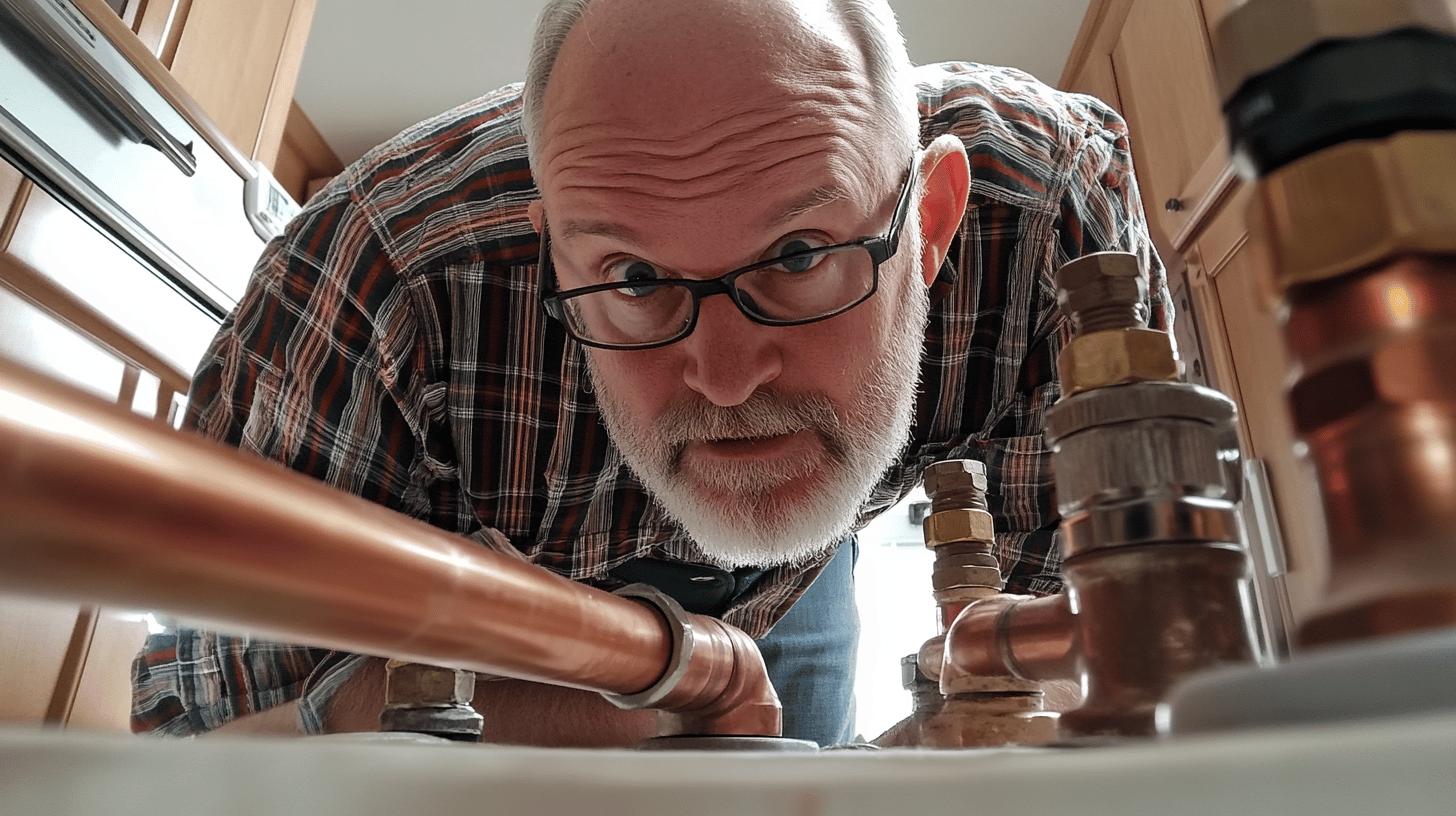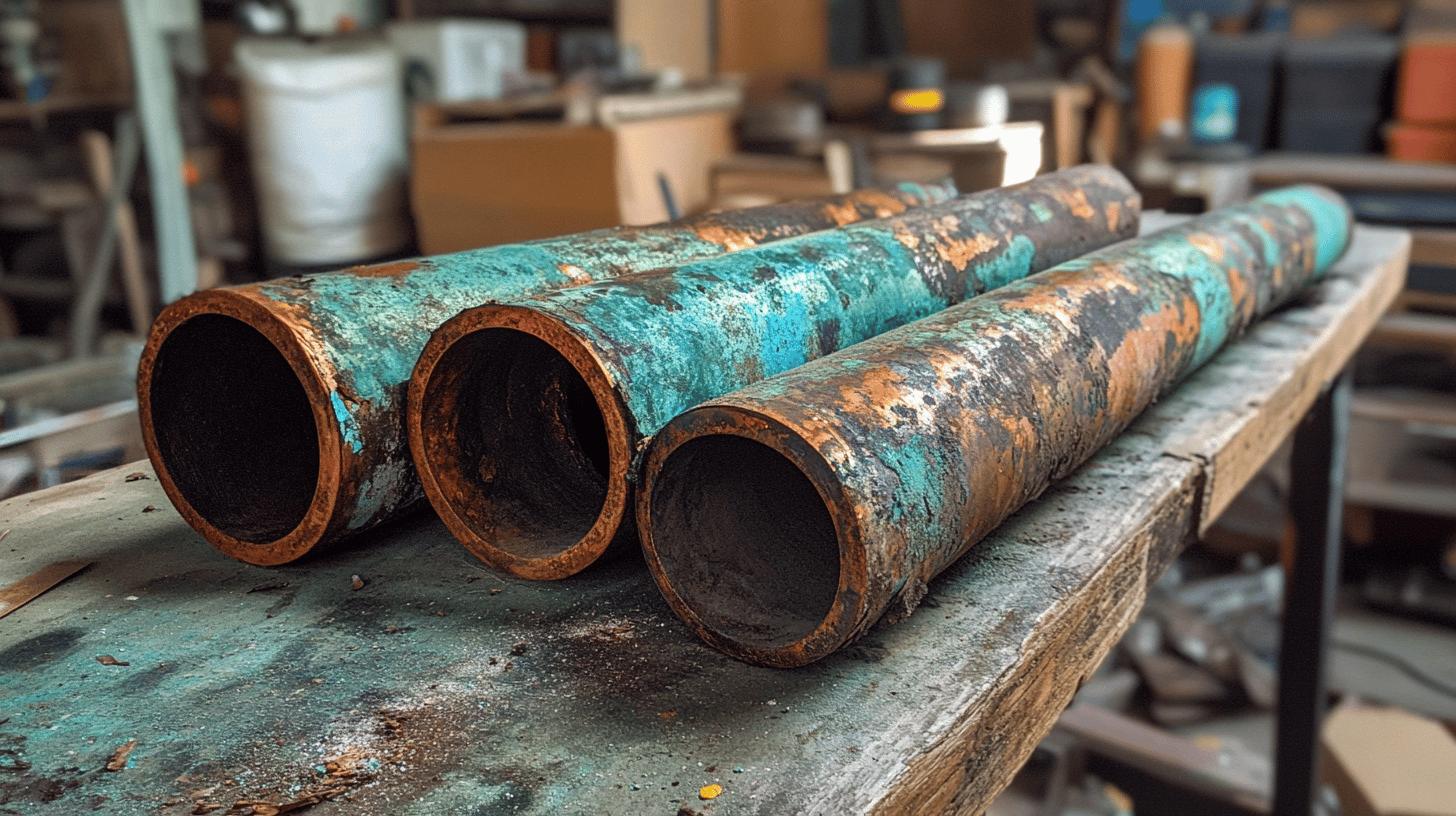TL;DR:
- Copper pipes last 50-70 years; lifespan varies by environment and maintenance.
- Factors affecting lifespan: water quality, environmental conditions, usage, installation quality, and chemical exposure.
- Signs for replacement:
- Frequent leaks (pinhole leaks).
- Discolored water (yellow/brown).
- Reduced water pressure.
- Visible corrosion (greenish-blue stains).
- Ignoring signs leads to structural damage, high repair costs, and health hazards (mold).
- Replacement benefits: improved water quality and pressure, reduced leaks, and increased efficiency.
- Proactive replacement recommended for pipes aged 50-70 years or with visible damage.
Regular plumber inspections are essential for maintenance.
Are your copper pipes past their prime? Known for their durability, copper pipes can still wear out over time, leading to the important question: when should you replace them? Knowing the expected lifespan and warning signs of aging pipes is essential to avoid unexpected plumbing issues.
In this guide, we’ll cover how long copper pipes typically last, common signs of wear and tear, and the risks of ignoring these issues. You’ll also learn about the advantages of replacing old pipes on time and explore alternative piping materials. Plus, we’ll discuss how professional plumbers can help you navigate the replacement process effectively.
Understanding the Lifespan of Copper Pipes
Copper pipes typically last about 50 to 70 years, but various factors like the environment and maintenance can impact their lifespan. They’ve been popular in plumbing because of their durability, but, like anything else, copper can wear out over time. While some pipes might hit the 70-year mark, others may fail sooner due to conditions that accelerate wear and tear. Keeping these factors in mind is important for determining when it’s time to replace your copper pipes.
Factors affecting the lifespan of copper pipes include:
- Water Quality: High mineral content or hard water causes faster corrosion.
- Environmental Conditions: Acidic soil or water leads to quicker degradation.
- Pipe Usage: More use equals faster wear and tear.
- Installation Quality: Poor installation creates stress points that fail faster.
- Chemical Exposure: Certain chemicals lead to rapid corrosion.
Regular maintenance is crucial for prolonging the life of copper pipes. Having a plumber perform routine checks can help spot early signs of wear, such as pinhole leaks or corrosion. Addressing these issues promptly and keeping the pipes clean can keep your plumbing system in good shape for years to come.
Signs That Indicate Copper Pipe Replacement is Needed

Copper pipes have clear signs when they need to be replaced. Look out for frequent leaks that start small but can lead to major water damage if not addressed. Discolored water, which may look yellow or brown, can indicate rust or corrosion inside the pipes. Reduced water pressure might point to blockages or narrowing caused by mineral buildup or corrosion. Additionally, if you see greenish-blue stains on the outside of the pipes, that’s a sign of external corrosion, suggesting internal damage as well.
| Sign | Description |
|———————–|—————————————————————————–|
| Frequent Leaks | Repeated small leaks, often pinholes, indicating pipe wear. |
| Water Discoloration | Yellow or brown water, suggesting rust or corrosion in the pipes. |
| Reduced Water Pressure| Noticeable decrease in water flow, possibly due to blockages or corrosion. |
| Visible Corrosion | Greenish-blue stains on pipes, signaling external corrosion and deterioration. |
Acting on these signs quickly can prevent serious damage. Ignoring them could lead to extensive water damage, mold growth, and costly repairs. Unattended leaks can worsen and damage your home’s structure. Discolored water not only affects taste but may also pose health risks. Reduced water pressure can disrupt daily tasks and signal bigger problems. By recognizing these signs early and consulting a plumber, you can save money and keep your plumbing system safe and running smoothly.
Risks of Ignoring Deteriorating Copper Pipes
Ignoring aging copper pipes can lead to serious water and structural damage. Issues like corrosion and pinhole leaks need to be addressed right away. Leaks can cause water damage that warps floors, damages walls, and encourages mold growth, which can harm your family’s health. Replacing damaged pipes on time helps prevent these problems.
Delaying replacement can also hurt your wallet. As leaks worsen, repair costs rise, and your water bills can spike due to wasted water. Fixing damage from leaks often costs more than replacing the pipes early on. Taking prompt action not only saves money but also reduces the stress of dealing with major repairs later. Regular inspections by a plumber can catch problems before they escalate, keeping your plumbing efficient and cost-effective.
Benefits of Replacing Copper Pipes

Replacing copper pipes boosts water quality and pressure. Old pipes can accumulate mineral deposits and corrosion, resulting in discoloration and decreased flow. Installing new pipes resolves these issues, ensuring cleaner and better-tasting water. Updated plumbing also restores water pressure, making everyday tasks like showering more efficient. Fewer leaks help conserve water and lower the risk of unexpected damage.
Upgrading your pipes not only prevents future plumbing problems but also enhances overall system efficiency. Aging pipes can lead to leaks and corrosion, which can result in costly repairs and damage. New pipes, designed to meet current standards, offer long-term reliability. Investing in replacements protects against future complications, keeping your plumbing system dependable.
When Should I Replace My Copper Pipes?
When should you think about replacing your copper pipes? If they’re between 50 and 70 years old, it’s a good idea to consider it. That’s their typical lifespan, and waiting longer can increase the chances of leaks and corrosion. Proactively replacing them helps prevent unexpected damage.
Aside from age, look for visible signs that suggest it’s time for a replacement. Frequent leaks, especially pinhole leaks, can compromise the integrity of the pipes. If your water is discolored—like yellow or brown—it might indicate rust or internal corrosion. Reduced water pressure and visible corrosion, such as green stains, are also warnings you shouldn’t ignore.
Ignoring these signs can lead to serious consequences. Leaks can cause structural damage and mold growth, resulting in higher bills and costly repairs. Addressing these issues early can help you avoid these risks. Regular inspections by a plumber can help determine the right time for a replacement, ensuring your plumbing system remains safe and efficient.
When Should I Replace My Copper Pipes?

When should you replace your copper pipes? If they’re between 50 and 70 years old, it’s time to think about it. Once they hit that age, the risk of leaks and corrosion goes up, so being proactive about replacement is a smart move.
Besides age, keep an eye out for visible signs that indicate you might need to replace them. Frequent pinhole leaks can mean the pipes are compromised. Discolored water, often a sign of rust or internal problems, also needs your attention. Reduced water pressure and visible corrosion, like green stains, are critical warnings not to overlook.
Ignoring these issues can lead to serious problems like structural damage, mold growth, and skyrocketing bills. Taking action early can help prevent these risks. Regular inspections by your plumber can pinpoint the right time for a replacement, keeping your plumbing system safe and efficient.
Final Words
Understanding the lifespan of copper pipes and recognizing the signs of wear is key to keeping your plumbing safe and efficient. If you ignore aging pipes, you risk serious problems like water damage and expensive repairs. Replacing old copper pipes with modern options like PEX or CPVC can improve water quality and reduce future plumbing issues. It’s also a good idea to consult professional plumbers for expert advice and guidance. Knowing when to replace your copper pipes can help you steer clear of potential hazards and ensure a dependable plumbing system.
FAQ
When should I replace my copper pipes?
Copper pipes generally last 50-70 years. Consider replacing if you notice frequent leaks, water discoloration, or reduced pressure. These signs indicate aging pipes that might fail soon.
How much does copper pipe replacement cost?
Copper pipe replacement costs vary, typically ranging from $2,000 to $15,000 based on home size and pipe accessibility. Consulting a professional will provide more accurate estimates for your specific situation.
How long do copper pipes last underground?
Underground copper pipes last about 50 years. Their lifespan can vary based on soil pH, moisture levels, and external pressures which might accelerate corrosion or damage.
Do copper pipes corrode inside?
Copper pipes can corrode internally, leading to issues like leaks and blockages. This often appears as blue-green stains or reduced water flow, signaling potential pipe degradation.
How can I tell if my copper pipes need replacing?
Indicators for replacement include frequent leaks, water color changes, green stains, and corrosion. Regular inspections by a plumber can also provide clarity on the pipe’s condition.
When did they stop using copper pipes in houses?
Copper pipes are still used today, though alternatives like PEX and CPVC have become popular since the late 20th century due to benefits in cost and ease of installation.
Do copper pipes always need to be replaced?
Not always. Properly maintained copper pipes can last their full lifespan. However, when evident signs of deterioration are present, replacement is often the best course of action.
How do I know if I should repipe my house with copper?
Repiping with copper may be suitable if you prefer its durability and heat resistance. However, consider modern alternatives like PEX or CPVC for potential cost and installation benefits. Consulting a plumber can help guide your decision.

